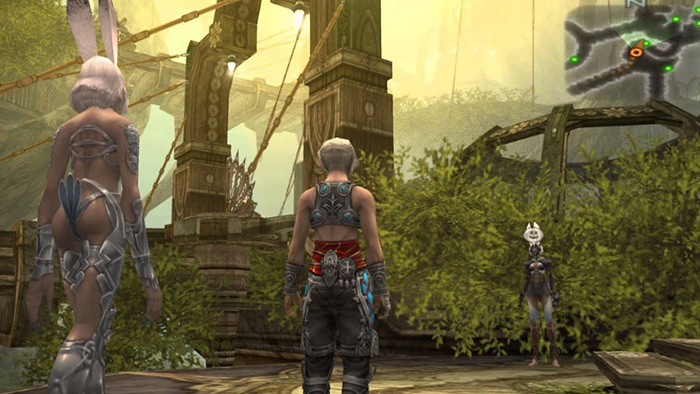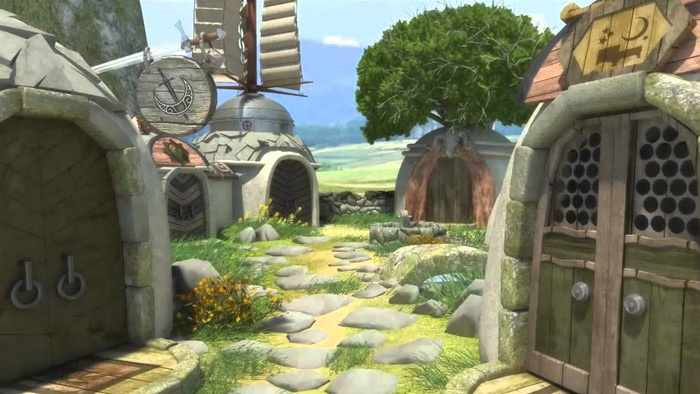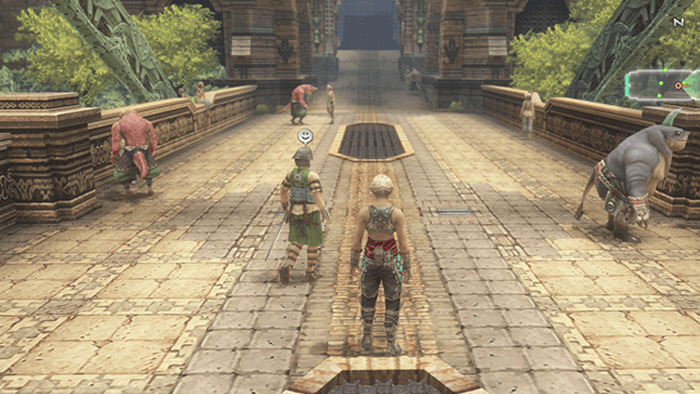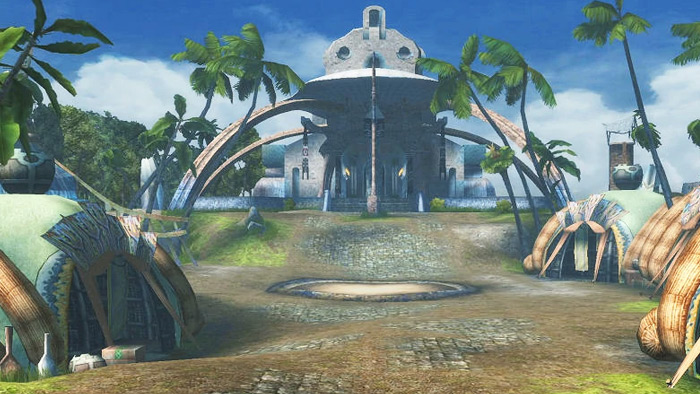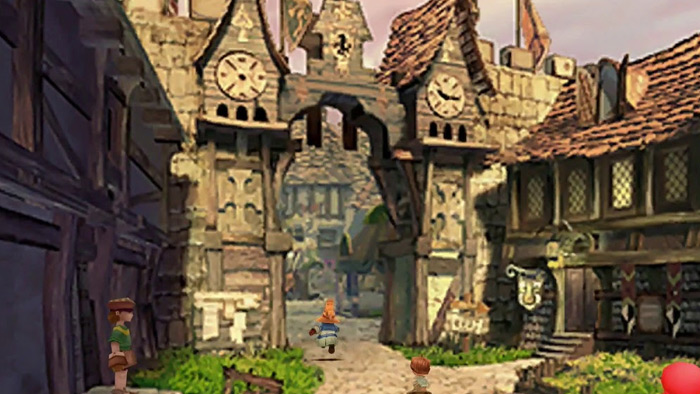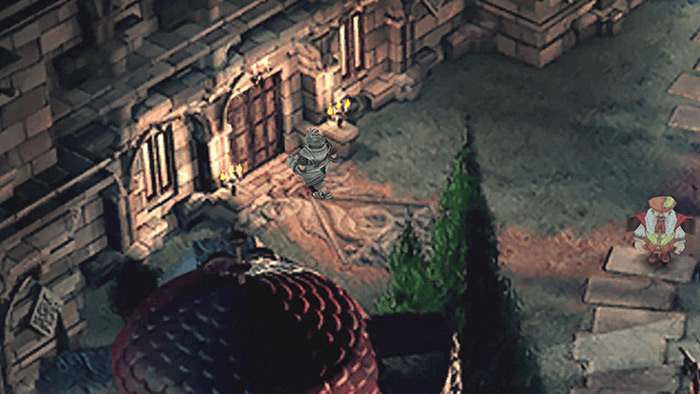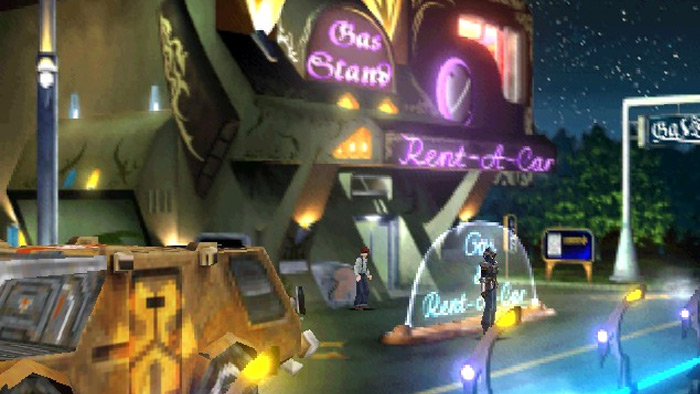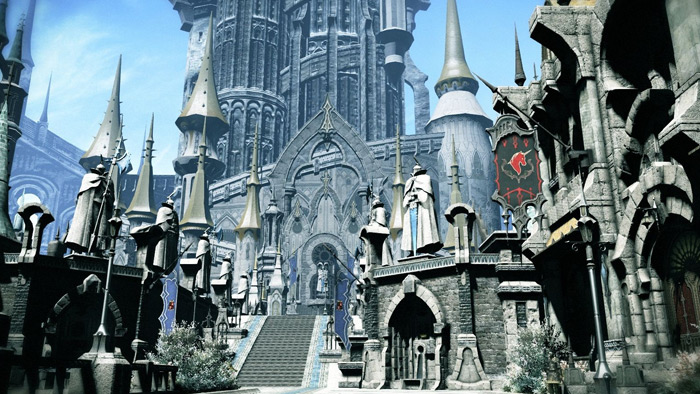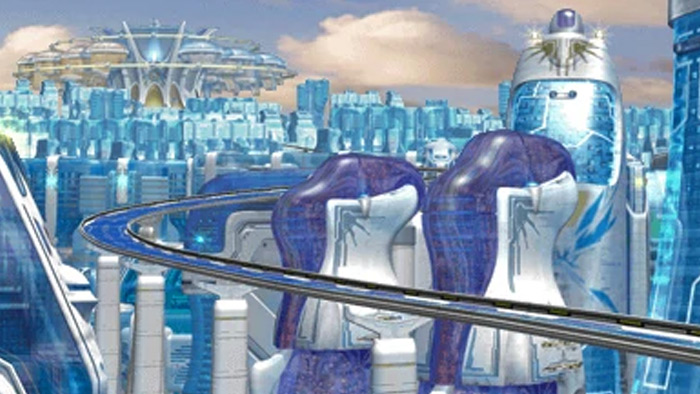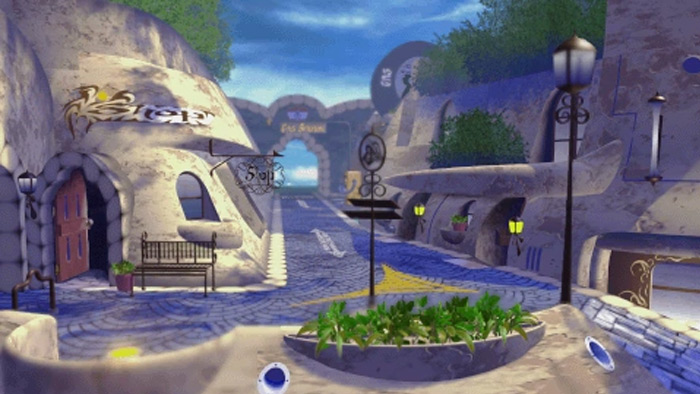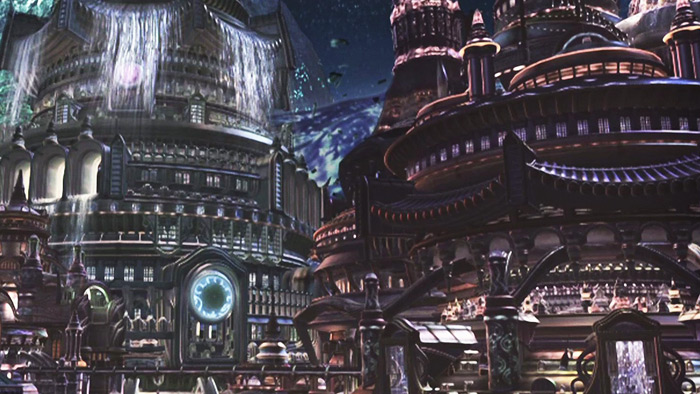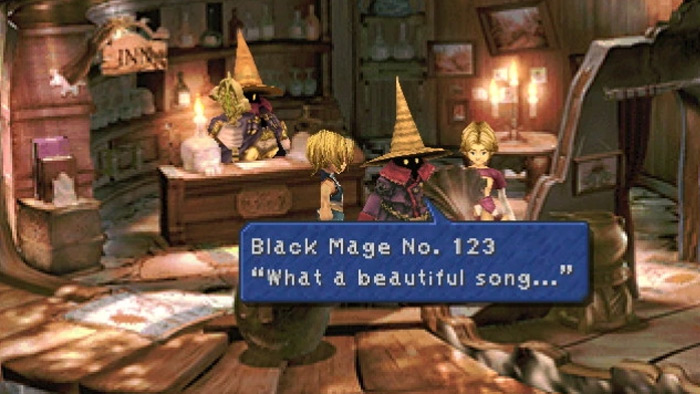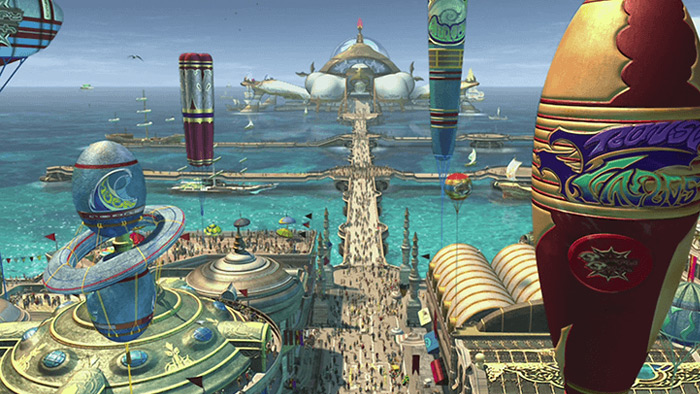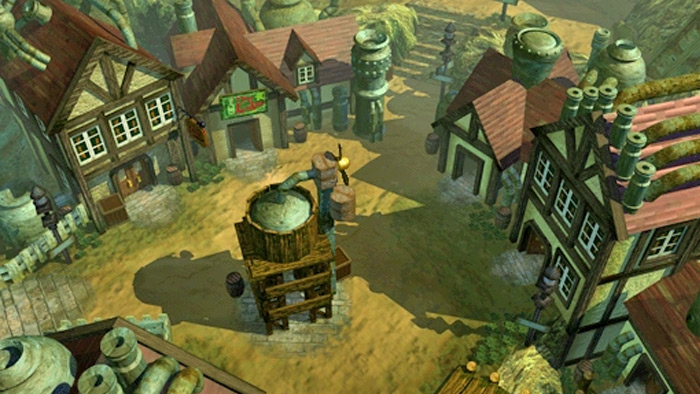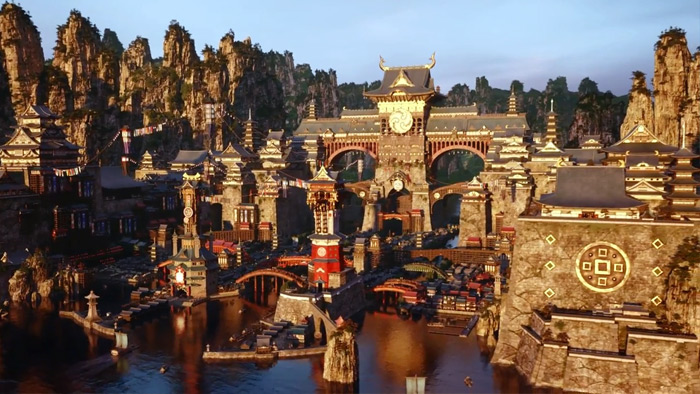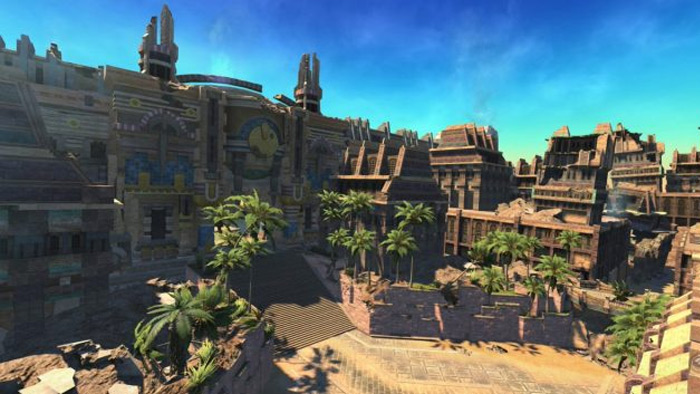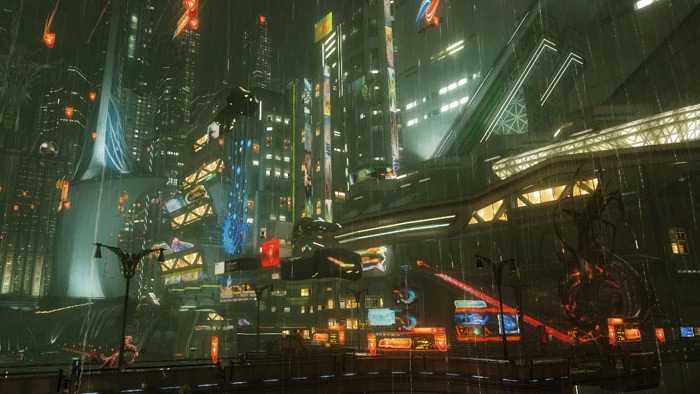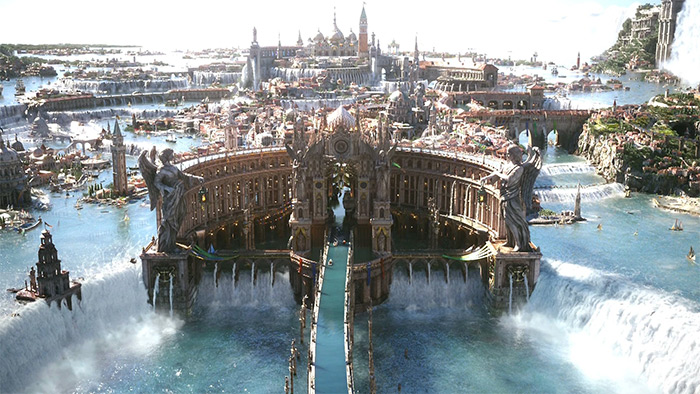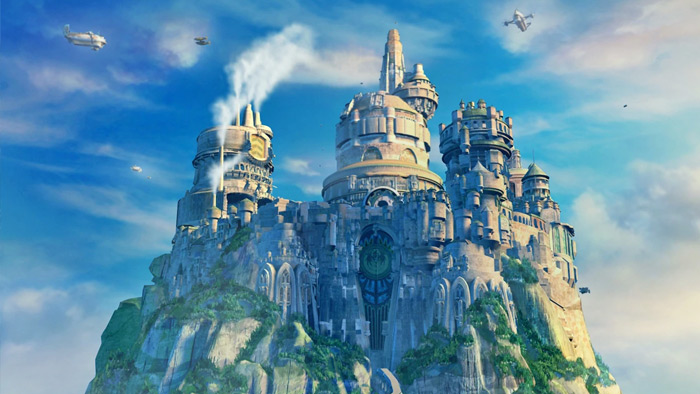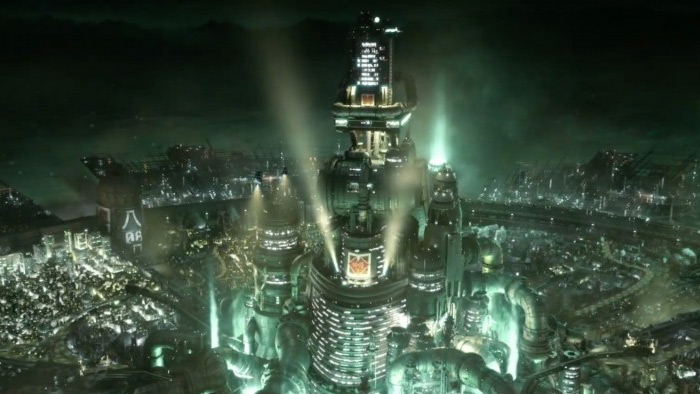For all the protagonists and storylines you’ve had to juggle and wrap your head around, each game at least tries to capture a memorable feel to it. One of the better ways to present that style happens through the towns you discover, explore, and often come to love. Some places pushed the limits of what to expect in a video game. Others may have carved their background music and ambiance into your memory. And of course, there were those places that simply evoked feelings—calm, melancholy, nostalgia… there’s a lot to love about these places that feel so real, and in some ways they kind of are. Let’s have a look at the some of the best towns in Final Fantasy history.
20. Eruyt Village
This woodland village makes its appearance in Final Fantasy XII. Known as the home to the viera, (a race of humanoids with rabbit features and our lovely Fran. The townsfolk have a deep reverence for the surrounding forests. A sentiment which is presented in the rather unique architecture of the town. You maneuver through the village on walkways that wrap around giant tree trunks, and fantastic wooden structures can be found at every turn. Just, uh, don’t light any fires too close to them. On top of the aesthetic, Eruyt Village has whimsical, albeit calm music. You could honestly relax and meditate just by taking a stroll. Eruyt Village really comes off as a peaceful town that seems utterly separated from the hustle and bustle of the rest of the world’s large cities.
19. Dali
This cozy village from Final Fantasy IX makes me think of a peaceful countryside where you can frolic through the fields or just watch the clouds all day. On a first glance you pretty much get that rustic feel with Dali, and the village itself doesn’t seem all that big. However there’s more to this quaint town than meets the eye. This is because Dali’s underground operates as a Black Mage factory for Alexandria(spoilers, sorry!). If you can ignore that twist though Dali seems like quite a relaxing idyllic place.
18. Bhujerba
Ah, Bhujerba. Also known as the “Skycity” which appears in Final Fantasy XII. Out of sheer principle I have to say that is freakin’ awesome! Bhujerba remains one of the more uniquely designed places in the franchise. You get a good view of the surrounding floating landmass which includes a crystal mine and lush forests that look a lot like what you’d see on the ground. While you can’t quite explore everything you see, this fantastical city is like a breath of fresh air.
17. Besaid Village
Compared to some of the other locations in Final Fantasy X, Besaid Village is a humble coastal town located near shimmering waters. However you can spot old city ruins in the vicinity of the coast which hint at an unfortunate history. Besaid Village still maintains a pretty carefree vibe overall, especially with its beach chillout BGM soundtrack playing in the background. Just a great way to start your journey through Spira.
16. Alexandria
Hopping back to another town from Final Fantasy IX is Alexandria. Players actually start their story in this capital of the Alexandrian Empire. Alexandria is a fantasy-style city that looks like it could be in a Disney-animated film. Yeah, it even has a massive white castle. In addition to that set-piece Alexandria has a picturesque city layout that includes a town square, shops, and plenty more. Up to a certain point in the story I could see myself actually living there! So it’s nice that we get to head back even after the game’s early events.
15. Treno
Going even further into FF9, players get to explore this “Dark City” throughout their adventures. This game just had so many good ones! Treno’s Moniker of a dark city comes from the fact that the city bathes in perpetual nighttime, making for a grim atmosphere. This dark backdrop suits Treno well for it is a city of polarity, divided clearly between the rich and the poor. The quality and style of the architecture cues you into what part of town you’ve stumbled into, from the grand auction house to the lowly slums. In Treno, the rich get richer and the poor stay poor.
14. Deling City
Next on our list is Deling City. Final Fantasy VIII had a knack for taking the contemporary and giving it that Final Fantasy… fantasy flair. Deling City follows that formula and takes inspiration from the city of Paris, France—lush, colorful, and with a refreshingly ornate touch to its building designs. Plus it even has a clear nod to the Arc de Triomphe. Not to mention its amazing background music. Honestly all this location needed was an Eifel Tower analog to really complete the look.
13. Ishgard
The Holy See of Ishgard first appears in the Heavensward expansion for Final Fantasy XIV, the franchise’s latest MMORPG title. Ishgard makes it on this list for its dedicatedly grim aesthetic and superb ambiance. Imagine a snow-capped mountain skyline disturbed only by a city profile of imposing gothic architecture. In Ishgard’s streets you’ll find armored guards solemnly standing on watch, and you can even see people’s breath in the cold air. Along with the city’s epic soundtrack(which unsurprisingly features organ music), a stroll through Ishgard will give you chills—pun intended.
12. Esthar City
Here’s an absolute monster of a city from Final Fantasy VIII that’s canonically big enough to be a small country.
It somehow manages to stay invisible from the outside world only due to a massive camouflage system.
In fact, Esthar City is so huge that you can only ever explore parts of it within the game.
Yet even with that limitation you still get an eyeful of this technologically advanced settlement (and I mean advanced even by Final Fantasy standards).
For as much as the franchise appropriately leans into the fantasy style, Esthar City takes a more futuristic approach to the genre.
Frankly it doesn’t exactly have a science fiction aesthetic so much as fantasy with really shiny science.
Everything about the city screams technology though, and its vibrantly blue-colored buildings and roads just make it feel energetic!
11. Balamb Town
Another Final Fantasy VIII town claims a spot on this list and takes us to a beautiful azure coast. Its architecture features the polished aesthetic you’d expect from a resort town while staying true to the picturesque landscape and seaside ambiance. Not to mention the iconic Balamb Garden is just a brief stroll away. If this town existed in the real world you’d find it filled with tourists and timeshares.
10. Zanarkand
Zanarkand. A city where machina and magic meet. Spoiler alert(if you haven’t beaten this game by now please do!): the bustling Zanarkand that you see in the beginning of Final Fantasy X is but a “dream” fabricated from memories of its long-gone inhabitants. The real version exists as little more than ruins, a testament to its destruction. In its prime though, Zanarkand was an awe-inspiring metropolis bigger and more lively than New York City. For those who have played through the game, the mere mention of Zanarkand may invoke bittersweet memories and a certain poignant soundtrack song.
9. Black Mage Village
Final Fantasy IX really had a knack for great town design. In Black Mage Village you find a community of black mages who just want to eke out the rest of their lives in peace. Interacting with the locals can lead to some surprisingly poignant dialogue, which made the place particularly memorable. It may have been one of the smaller settlements in the game for sure. But that only adds to its coziness and overall charm. I mean come on, even the houses have hats!
8. Luca
Next up we have Luca, a port city in Final Fantasy X and really one of the first “big” cities that you visit in the game. As you sail into Luca you get a brilliant cutscene that highlights its massive Blitzball stadium. The stadium sits in the middle of the water, connected to the city only by a large walkway and a few harbors. You can even see the gorgeous surrounding environment with its bright waters and mountains covered in lush forests. Luca gets even better once you get off the boat since you can finally explore the rest of this busy thriving city. While it is a big place, Luca feels almost cramped with all the buildings. One thing I really like about this design is the city’s super colorful rooftops, sidewalks and interiors. I’m not exactly sure what it is, but something about cities near the water just makes them so memorable in these games.
7. Nibelheim
You’ll be able to visit this cozy mountain village if you play through Final Fantasy VII. And fair warning here: the remake is amazing. Originally the home of Cloud Strife and Tifa Lockhart, this town gives off the unapologetic vibe of an RPG-village trope—narrow streets, rustic buildings, and just enough NPCs to show that people live there. However it turns out that the Shinra Electric Power Company uses that façade to cover up an incident from years ago. The juxtaposition of this truth versus Nibelheim’s presented exterior helps the town stand out on this list.
6. Kugane
You can explore this breathtaking harbor city if you play Final Fantasy XIV: Stormblood, the second expansion for Final Fantasy XIV. In the game’s lore Kugane serves as the only port open to foreign ships, leading the city to host visitors from all over the world of Hydaelyn. This seems narratively appropriate as the city looks massive and it feels big with all of the NPCs that inhabit the area. And speaking of looks, this city has them in spades. Here you’ll find pristinely symmetrical buildings, tiled rooftops, and lanterns that provide most of the city’s lighting. Kugane’s design is a clear homage to Japan’s Edo period style and architecture, albeit taken to a more ambitious scale. To round out this aesthetic is the city’s ambient soundtrack which helps build up an authentic atmosphere and even changes during sunrise and sunset.
5. Rabanastre
This opening city for Final Fantasy XII is like a metropolitan oasis in the middle of a literal desert. Rabanastre’s polished buildings make for a really striking first impression. And the greenery that surrounds and dots the city really make the structures pop. Plus its architectural style nods to the aesthetic of cities like Istanbul. The NPCs roaming the streets add a nice touch that makes this city feel much livelier too, making it a surprisingly charming place to explore.
4. Academia
An amazing city from Final Fantasy XIII-2 that can easily compete with Esthar City as one of the most technologically advanced settlements in the franchise. I’ll be fawning over the one from 400 AF (time shenanigans were a big plot point in this game). Academia’s vibe feels a lot like a metropolis but with way more advanced technologies than our real-life cities. The advancements look familiar too which helps make it slightly more believable. It has sleek high rises, busy streets, hover cars, and automated walkways. Plus it’s super illuminated with plenty of streetlamps, billboards, and multi-colored building lights. I could imagine a place like New York City or Tokyo getting to Academia’s level within the next few hundred or so years. And that familiarity honestly makes it all the more memorable.
3. Altissia
You can visit this capital city of Accordo if you dive into the incredible world in Final Fantasy XV. Altissia takes the aesthetic of Venice and turns the dial up to a thousand. A wide pan of Altissia gives you a breathtaking view of tiered waterfalls, canals, and docks. The developers thankfully incorporated Renaissance architecture with just enough of a modern touch to make it feel unique. Also, gondolas—gondolas everywhere! Traveling through Altissia may require some mandatory gondola rides, and some fans really don’t like this. But if you dig this type of aesthetic you’ll be fine with all the sights, sounds, and people that you can encounter!
2. Lindblum
Here’s the last(I know, finally) of the Final Fantasy IX towns to appear on this list. Lindblum appears as one of the most vibrant and memorable locations in the entire franchise. Fans first set their sights on this city-atop-a-mountain with a cutscene that pans into Lindblum. Even from afar you can see the airships occupying the city’s skies, and your entrance gives you an eyeful of this settlement’s technological marvels. Lindblum definitely buys into the steampunk aesthetic. All around it’s a beautiful place with colorful streets and well-designed buildings. The general ambiance is rather lively too, with NPCs in the streets and a lot for you to explore.
1. Midgar
Arguably the most iconic city in the franchise, Midgar serves as the starting point for Final Fantasy VII. It’s just so brutally industrial in style—metal everywhere and bright lights only for the places that matter. The city structure really stands out too: a metropolis for the powerful sits on the upper plate while everything below wallows in the slums. And since Midgar’s energy needs have turned the surrounding area into a desolate wasteland, there’s nothing else to see beyond the city. Conceptually Midgar has everything that makes the game feel unique. Its two-leveled architecture embodies the separation of society between poor and rich, new and old, and even good and evil. The fact that it serves as home to both the Shinra Electric Company (the video game epitome of corporate evil) and AVALANCHE (the little guys trying to do the right thing) nails that theme hard. Fans everywhere should rejoice as well considering the incredible FF7 remake that’s bringing back Midgar and making it even more awesome than ever before.
